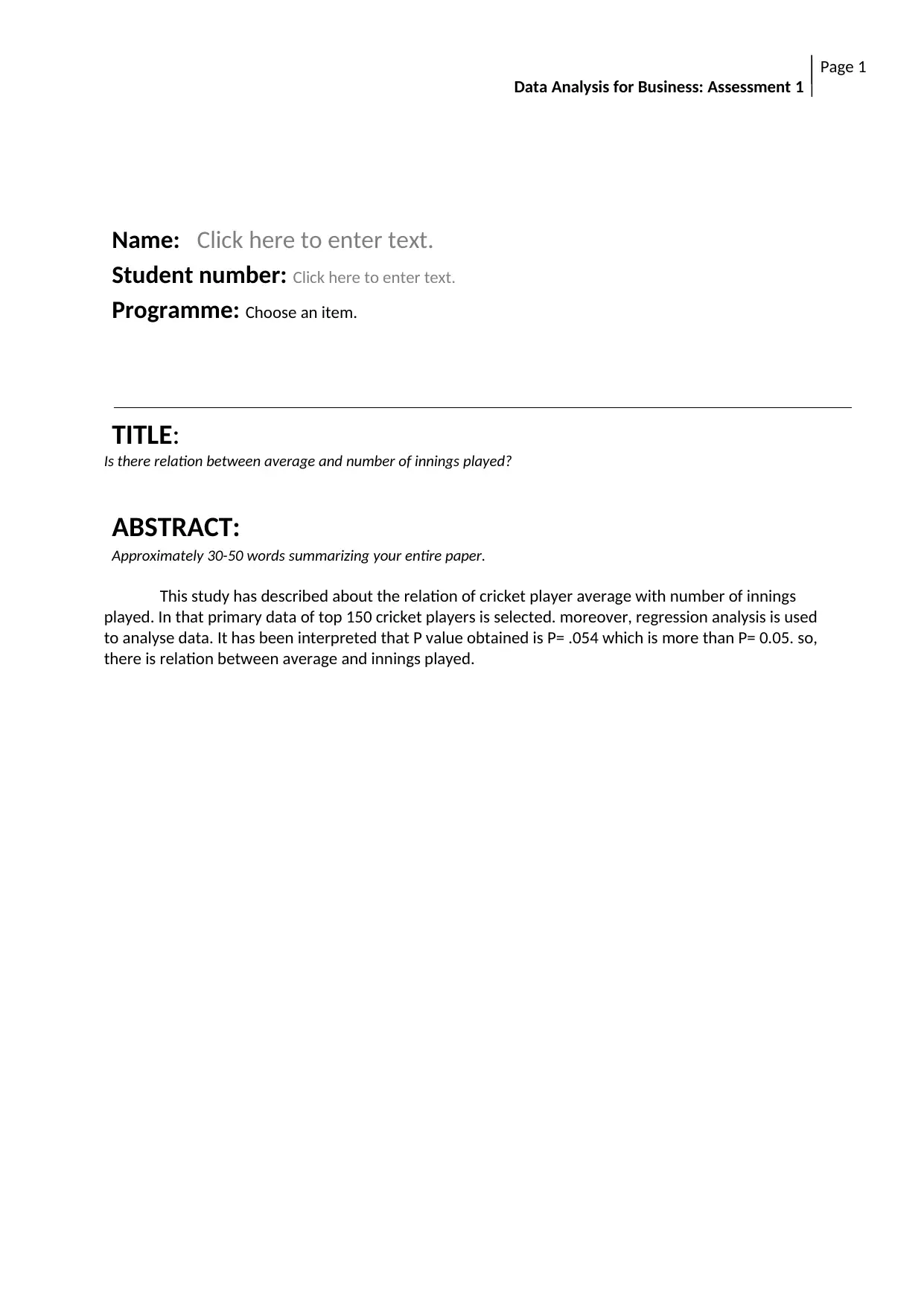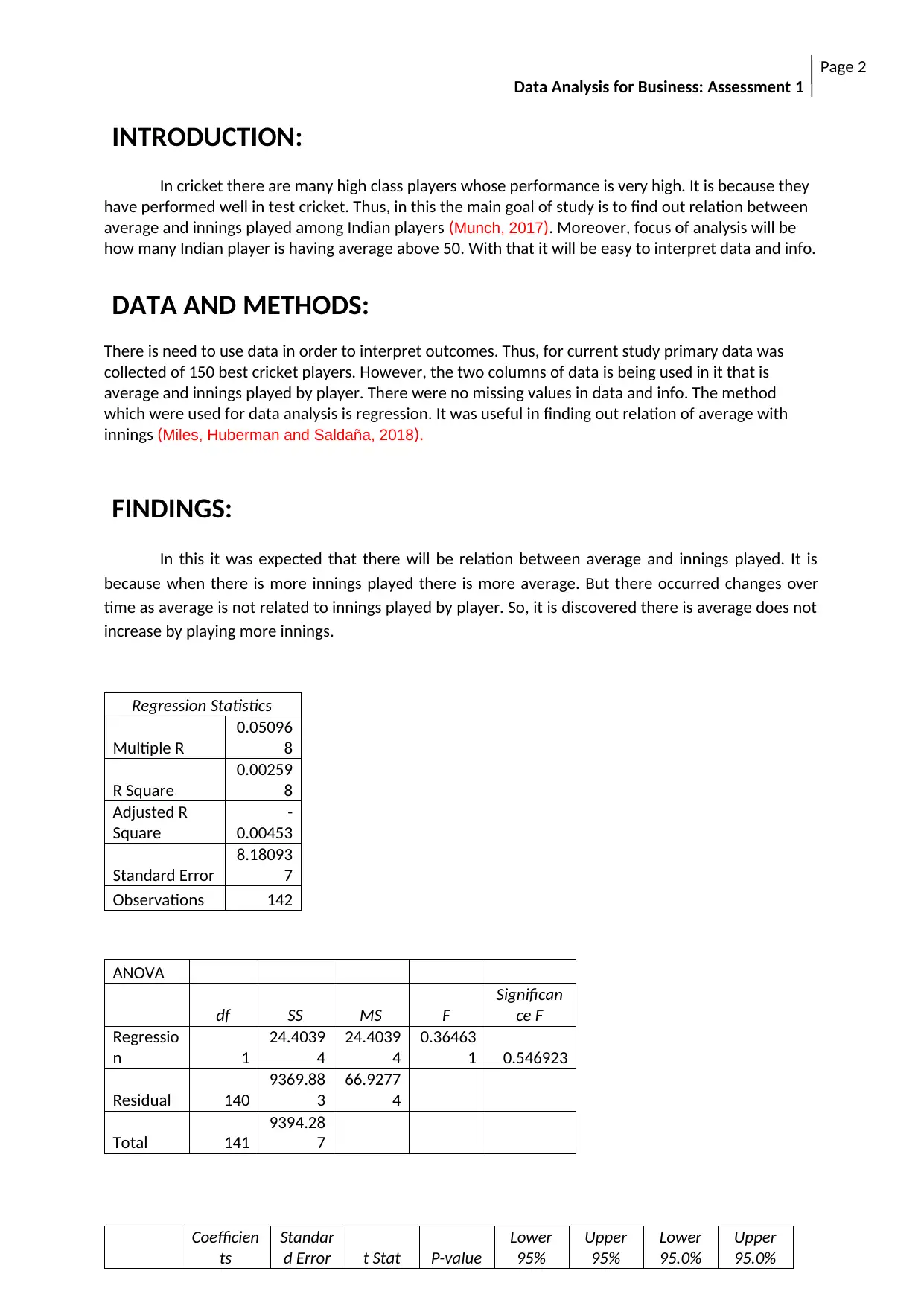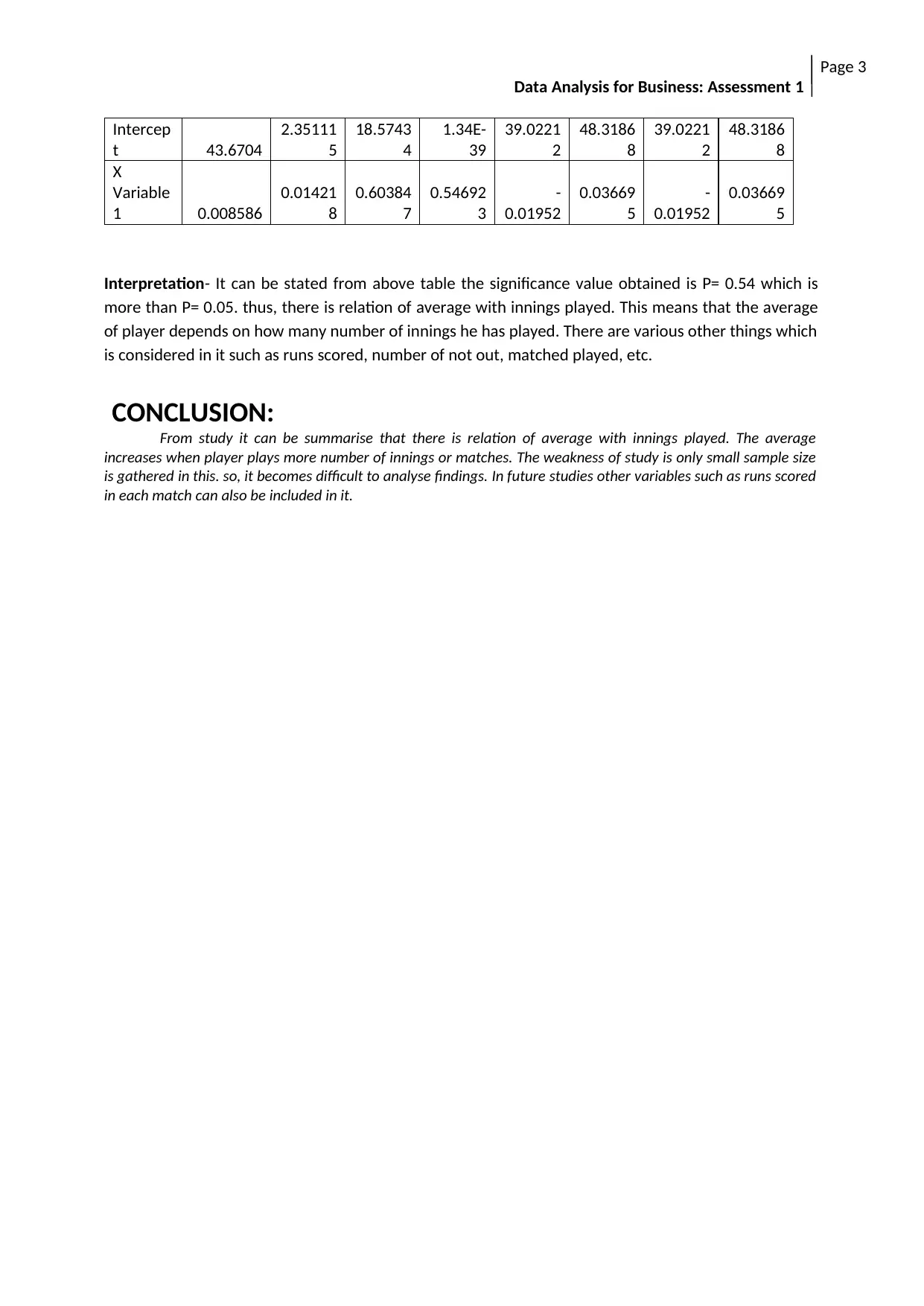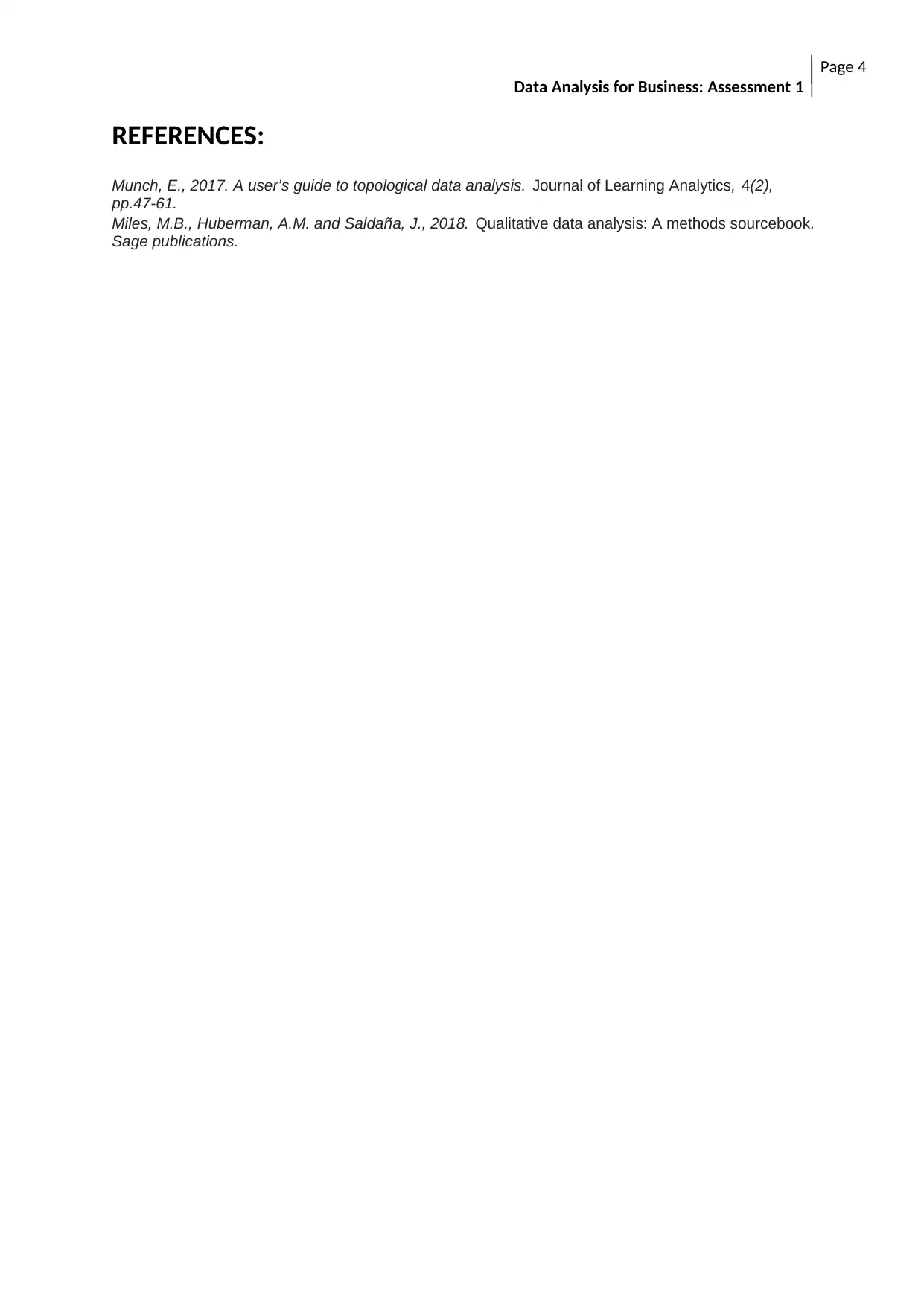Relation between average and number of innings played in cricket
VerifiedAdded on 2022/12/09
|5
|703
|261
AI Summary
This study examines the relationship between the average and number of innings played by cricket players. Regression analysis is used to analyze the data and determine the significance of the relationship. The findings suggest that there is a relationship between the average and innings played, with the average depending on the number of innings played. However, the study acknowledges the limitation of a small sample size and suggests including other variables in future studies.
Contribute Materials
Your contribution can guide someone’s learning journey. Share your
documents today.
1 out of 5








![[FULL ACCESS] Assessment of House Location for Renovation and Sales](/_next/image/?url=https%3A%2F%2Fdesklib.com%2Fmedia%2Fimages%2Fbm%2F16524e5a7dca41bbabd8ebcae3aab0d2.jpg&w=256&q=75)


![[object Object]](/_next/static/media/star-bottom.7253800d.svg)